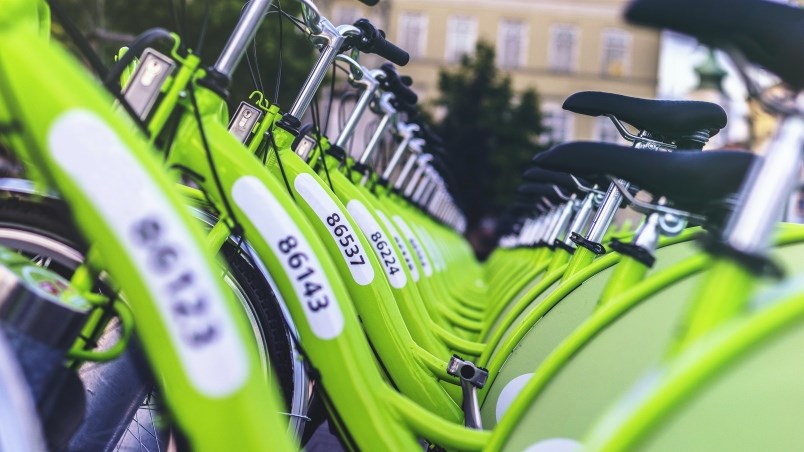I drive a red 1996 Ford Ranger.
It cost $2,500. That’s like $2,000+ less than my “bikepacking” bike cost me. Even though the pickup truck was cheap and makes me super popular among people with things to move, I don’t like to drive it unless I have to. In the last year, I’ve been hiking a lot. Some trailheads are a bit farther away than a traditional bike ride and mostly uphill, so I confess that I have been driving to hike. Ugh. So un-green.
I really wanted to bike to hike. So, I decided to go in on an e-bike. Yippee!
The big decision was whether to buy a new, purpose-built e-bike or convert my existing commuter with a kit. For those of you pondering the same question, here are some considerations.
If you have an existing bike and you really like it and don’t need to carry a lot, why even think about buying a new e-bike? Conversion kits cost way less, and all those chipper YouTube videos make it “look simple” to install them. Order some parts and soon you will be zipping up to the Grouse Grind, or Braemar, or even the top of Seymour.
Sounds easy, right? The key words above are “look simple.” If you don’t change your own brake pads, install new tubes when you get a flat, don’t know where to find limit screws and have no idea what a three-millimetre Allen key is, then maybe removing your bottom bracket and installing a motor, brake sensors, shift sensor, a controller/display, possibly a throttle, new tires, new chain, new chain ring and other optional pieces is not for you. Just crack open your wallet and buy a purpose-built e-bike and the most kryptonite bike lock you can afford.
Even if you are reasonably mechanically inclined, which kit should you choose? Fundamentally there are two motor choices: hub drives that fit on either rear or front wheel, or mid-drives installed on the bottom bracket where your pedals attach. Hub drives are easier to install and cheap(er).
Biking to hike has challenges. You have to get to trailheads. Research revealed that if you live with the dream of vanquishing long, steep hills, you will likely not be super happy with a hub motor. Hub motors are great when the ground is mostly level, or with slight inclines, but they struggle with big hills. At twice the cost of a hub motor, mid-drives are pricy. I mean, I bought a six-cylinder Ford truck engine with frame and body included for $2,000, and an e-bike kit with mid-drive and all the fixings cost me $1,600 (including shipping).
If you go the kit route, recognize that your battery and motor have an intimate relationship. When one is not happy, neither is the other. Battery power gets drained faster if you are asking the bike’s motor to sustain even a modest 20 kilometres per hour going uphill. So for a bike-to-hike set-up, you need to get a high capacity battery as well. If you are going uphill a lot, get the strongest, most “torquey” mid-drive motor and the highest capacity battery you can afford.
I eventually chose a 750-watt mid-drive combined with a 530 watt-hour 48 volt, 13.5 amp-hour battery. This setup has me zipping uphill. I am now able to bike to hike – just in time for the snow to fly. I’ll be asking for studded tires and heated gloves for Christmas. In the meantime, zoom zoom.
Heather Drugge is a sustainable transportation advocate who has used her bike for transportation for 20 years. Now that she has an e-bike, maybe she'll look at a jetpack next. [email protected].



